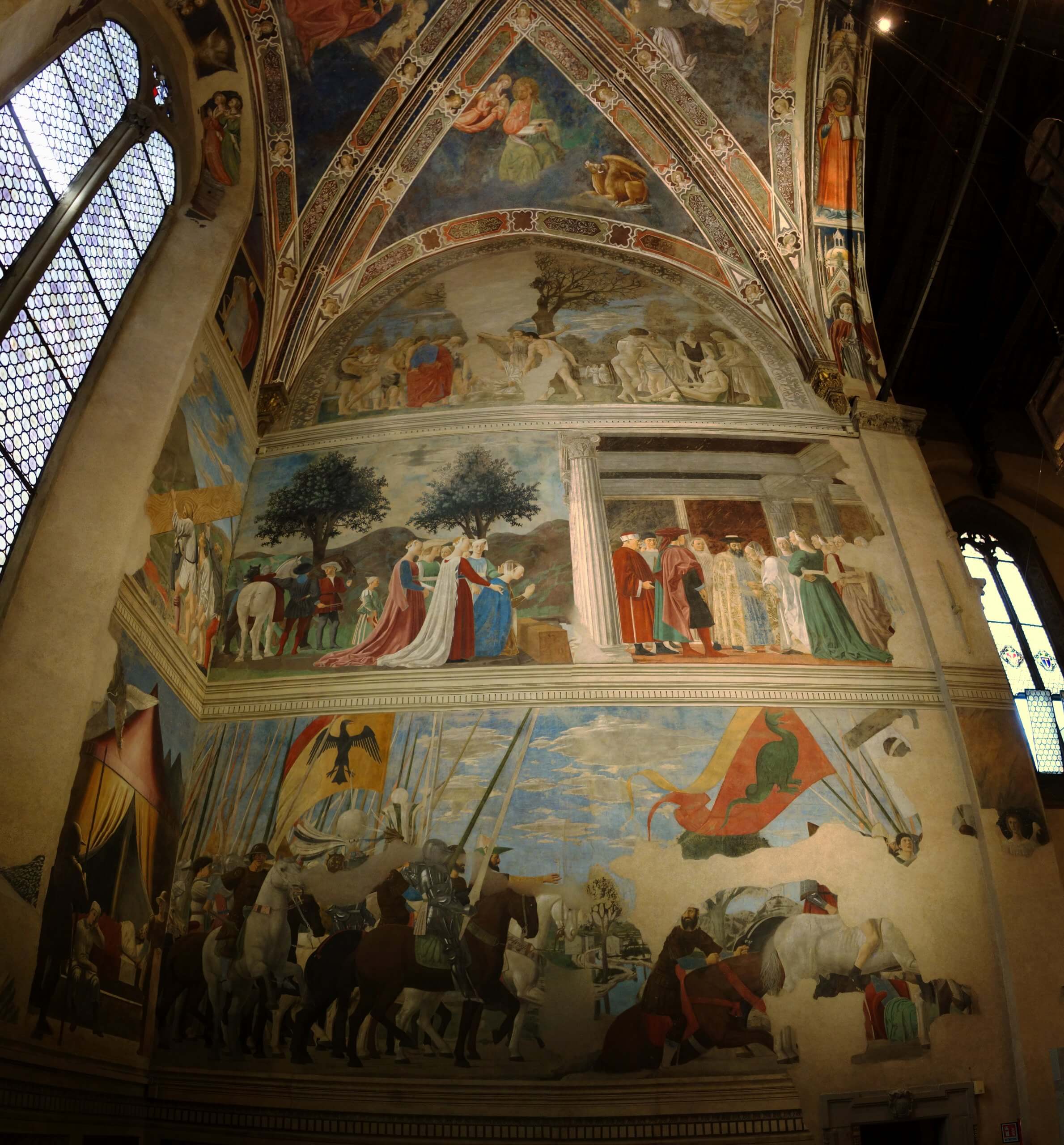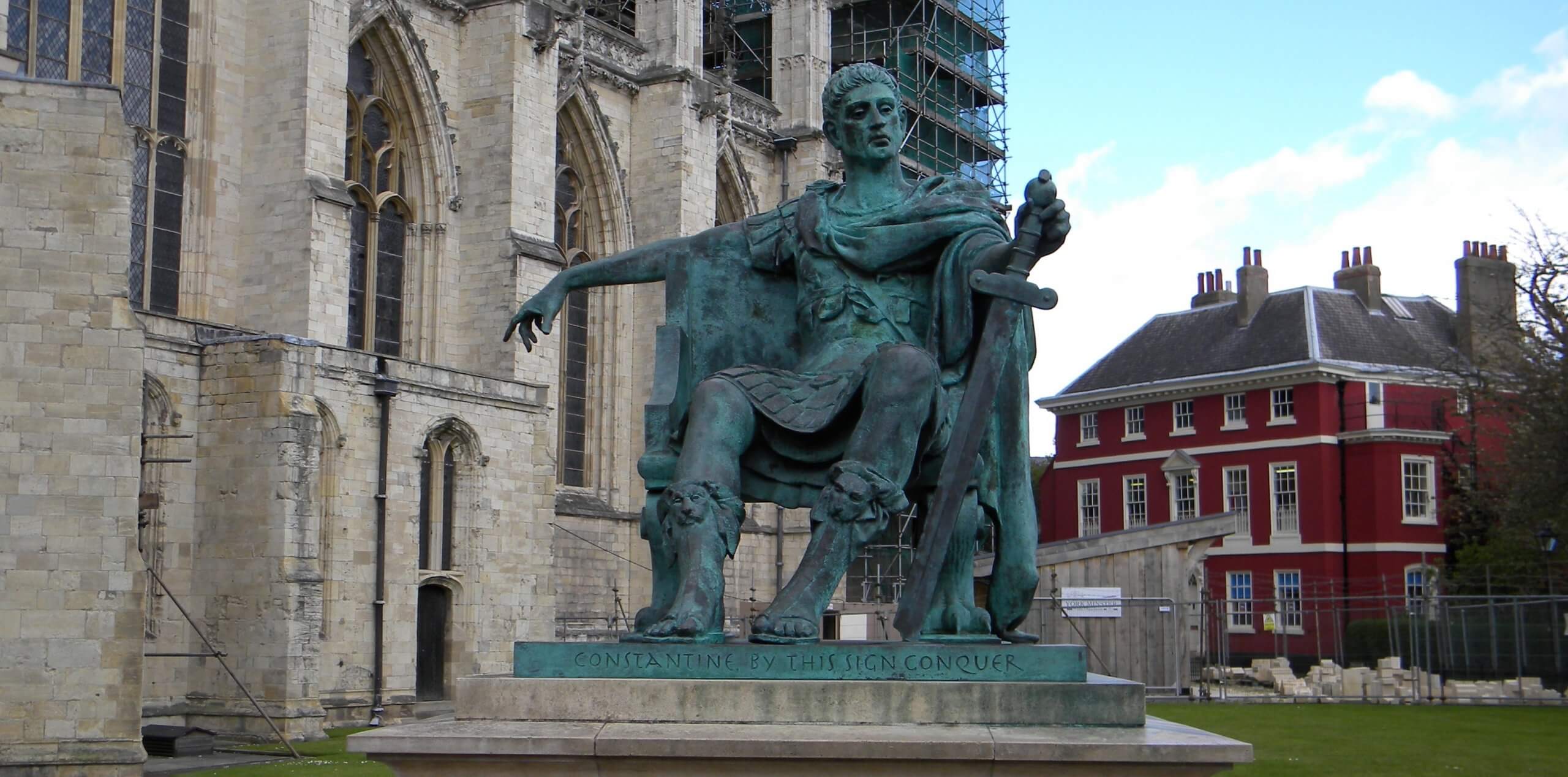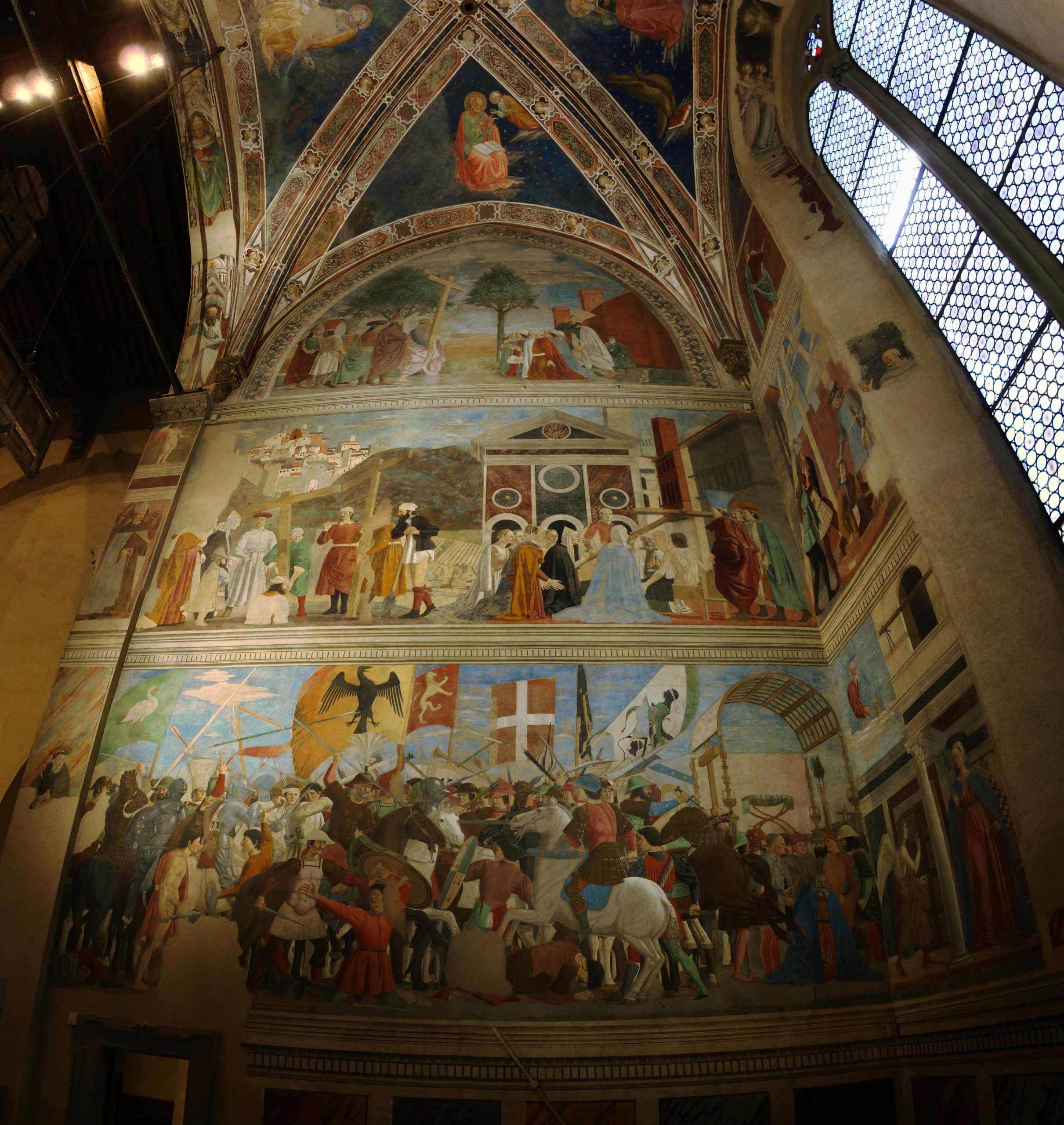Probably, but not certainly, 1750 years ago, on February 27, 272, a great Roman emperor and a brilliant politician was born in Naissus, Moesia (now Niš, Serbia): Flavius Valerius Constantinus, also known as Constantine the Great.
His father is Constantius Chlorus, Caesar (deputy emperor) of the northwest, and his mother is St. Helena. Challenging the “Tetrarchy” — the government of two Augusti (co-emperors), and two Caesars (their deputy and designated successors) set up in 293 by the emperor Diocletian to manage the vast empire — in 306, on the death of his father, Constantine was acclaimed by the Roman army at Eboracum, the modern York, northern England, as a Caesar.
He marched his army south and won Gaul, defeated the Germans, conquered Turin, Milan and Verona. On October 28, 312, in the battle that began in Saxa Rubra and ended at the Milvian Bridge, north Rome, Constantine triumphed over the tyrant of Rome, Maxentius, who drowned in the Tiber. Our “most pious prince” put an end to the persecutions against Christians (with the exception of two years under the emperor Julian the Apostate, 361-363), above all by proclaiming the Edict of Milan in 313, which conferred on Christians freedom of worship and returned to them what was confiscated during the persecutions. In 324 Constantine, after the defeat of the tyrant of the East, Licinius, becomes the sole emperor of Rome: he reformed the Senate, made fiscal and monetary changes, introducing the solidus aureus, a golden standard coin; he intervened heavily in the religious field, gathering the Council of Nicaea in 325, the first Ecumenical Council, against the Arian heresy; in 330 he inaugurated Constantinople, the Second Rome, as the new capital of the Roman Empire, on the ruins of the ancient Byzantium (now Istanbul, Turkey).
He built the first Christian basilicas:
When the Edict of Constantine allowed Christians to declare themselves in full freedom, art became a privileged means for the expression of faith. Majestic basilicas began to appear, and in them the architectural canons of the pagan world were reproduced and at the same time modified to meet the demands of the new form of worship. How can we fail to recall at least the old Saint Peter’s Basilica and the Basilica of Saint John Lateran, both funded by Constantine himself?[1]
It is necessary to add the Constantinian basilicas of St. Paul on the Via Ostiense and of Santa Croce in Gerusalemme (Holy Cross in Jerusalem), built in Rome going along with his mother’s wishes after having found the relics of the Cross; as well as those of the Nativity in Bethlehem and of the Holy Sepulcher in Jerusalem. Constantine died in Nicomedia of Bithynia, now in Turkey, in 337 and was buried in Constantinople.
Is Constantine’s conversion a providential moment throughout the history of humankind, prefigured by the Pax Augusta during which the Word was made flesh, or is it the beginning of the decline of a Church that is compromised with imperial power? Let us leave to others these deeper questions and take advantage of this anniversary to talk about Constantine’s dream.
Eusebius of Caesarea (ca. 260-339), Bishop in Palestine, in his Ecclesiastical History tells us a lot about the “Constantinian turn,” and in particular of the vision that Constantine had the night before the battle against Maxentius and which led to his conversion: “the appearance to Constantine of the Chi-Rho, radiant in the symbolic night of his unbelief and accompanied by the words: ‘In this sign you will conquer!’”[2] And he won by placing the Christian monogram (Chi-Ro) on the insignia or perhaps on the shields of his men, according to Lactantius (ca. 250-317), an African ecclesiastical writer and tutor to Constantine’s first-born, Crispus.
The choir of the Church of San Francesco in Arezzo, north-central Italy, gives us the cycle of frescoes depicting The Legend of the True Cross, painted by Piero della Francesca between 1452 and 1466.
 Two scenes in this fresco are precisely those of Constantine’s dream and of his victory over Maxentius. After admiring those paintings, Bohuslav Martinu (1890-1959), Czech composer with an eclectic style, wrote the evocative symphonic poem Les Fresques de Piero della Francesca in Nice in 1955, as the composer himself tells us:
Two scenes in this fresco are precisely those of Constantine’s dream and of his victory over Maxentius. After admiring those paintings, Bohuslav Martinu (1890-1959), Czech composer with an eclectic style, wrote the evocative symphonic poem Les Fresques de Piero della Francesca in Nice in 1955, as the composer himself tells us:
I have very often visited the Church of San Francisco at Arezzo , where I have admired Piero della Francesca’s work, and I have tried to express in music the kind of solemn, frozen silence and the opaque, colored atmosphere which contain a strange, peaceful, and moving poetry.[3]
The second movement (Adagio) is based on Constantine’s dream and a viola solo, similar to a military trumpet announcing the battle, almost describes the scene. In the first part of the third and last movement (Poco allegro), syncopated music is inspired by Constantine who defeats Maxentius without any effort, simply by showing the cross.
Title photo: public domain. Emperor Constantine, marble head and fragments from a colossal statue Date: ca. 313-315 [or 330?] AD. Original photograph by Allan T. Kohl.
[1] John Paul II, Letter to Artists (April 4, 1999), 7.
[2] Benedict XVI, Speech in Harissa (September 14, 2012).
[3] A. Cohn, Twentieth-century Music in Western Europe: The Compositions and the Recordings (Lippincott, Philadelphia 1965), 187.



